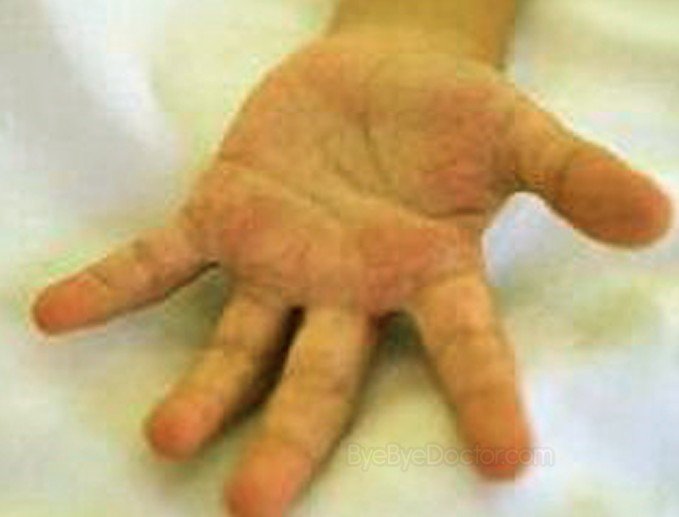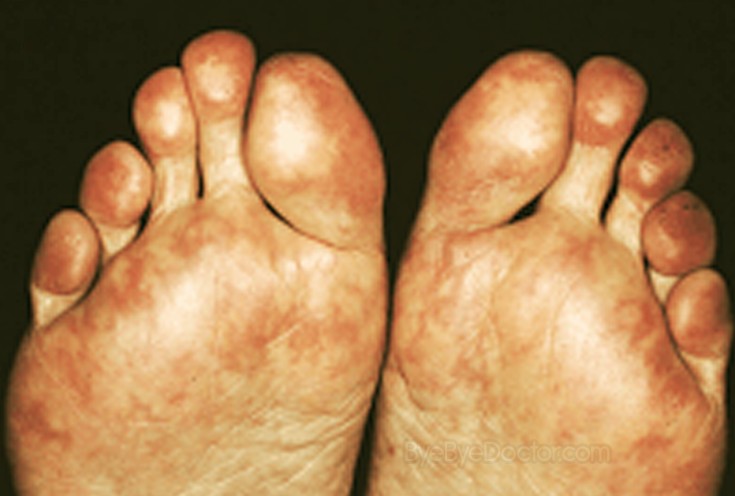Livedo Reticularis
Last reviewed by Dr.Mary on August 7th, 2018.
What is Livedo Reticularis?
Primary Livedo Reticularis or more commonly known as Livedo Reticularis is a common benign vascular condition which commonly affects the superficial blood vessels and capillaries. Livedo Reticularis has a mottled net-like or lace-like appearance with purplish or bluish discoloration which is non-blanchable. The presentation of this disease is evident on the skin of the arms, legs, palms and soles and in rare cases includes the torso. This condition is usually aggravated by cold temperature or may be a symptom of other underlying disease. A detailed medical history and determination of the course of the disease is important to rule in Livedo Reticularis.
Livedo Reticularis Symptoms
Symptoms of Livedo Reticularis vary on each case. A number of clinical test and measures are used to examine Livedo Reticularis. A few of the more commonly used are CBC, ANA, coagulation test and biopsy. The following are the common signs and symptoms reported:
- Purplish or bluish rash with an irregular pattern
- Netlike pattern with a diameter of mesh less than 3cm
- Non pruritic rash (not itchy)
- No distinct border (some areas may be pale)
- Painful or swollen associated joints
- Tingling or numbness
- Swelling of the area
- In severe and rare cases, leads to ulcers
Livedo Reticularis Causes
Livedo Reticularis is an idiopathic and benign disorder. Several factors may cause the mottling appearance of the skin. This is brought about by swelling of medium sized blood vessels including capillaries which results into pooling of blood into that area. There is an interruption to the normal blood flow brought about by vascular obstructions from infections, blood clots or vessel wall anomalies like in Calciphylaxis. With normal physiology a network of vessels are responsible to provide enough blood to the more superficial ones. Due to the presence of obstructions or inflammations there is a disruption on the mechanism leading to scarcity of blood to the superficial vessels. As a compensatory mechanism, the underlying blood vessels swell to continually supply blood to the more superficial ones. This compensatory effect causes spasm and prolonged vasodilation trapping some blood on a particular area thus a cutaneous discoloration appears.
In some instance, it is thought to be due to a reaction from cold weather where vasoconstriction of blood vessels occur which is common among children and adults. In some studies there is a greater incidence of Livedo Reticularis on people leaving on colder countries. Some of this resolve spontaneously and others may leave a permanent changes in the skin. Another acceptable fact of the cause of Livedo Reticularis is hormonal changes or an autoimmune response which occur more commonly among women during third decade of life.
Systemic Lupus Erythematosus, Rheumatoid Arthritis, Sneddon’s syndrome and some form of cancers are among the conditions that presents Livedo Reticularis during the course of their progression. An immediate consultation to a medical professional is necessary to determine the causative factor of Livedo Reticularis especially if it is reoccurring more often. Livedo Reticularis is also brought about by an allergic reaction or side effect from certain drugs or medicines especially those containing with Hydroxyurea or cocaine.
Livedo Reticularis Treatment
Treatment for Livedo Reticulatris may be conservative or focused on the specific symptoms. There is no specific drug intervention that can cure Livedo Reticularis. One of the causative factor is the pooling of blood which is common on the lower legs. This can be immediately treated by exercise like ankle pumping, leg elevation and application of warm modalities to increase lower extremity circulation. Avoid cold application on affected areas. Over time the symptom of skin mottling does not reverse and becomes permanent even with changes in temperature. For systemic involvement like in Rheumatoid Arthritis, an anti-inflammatory medication is needed to decrease and alleviate associated pain and swelling. Administration of anticoagulants, antiplatelets and corticosteroids show improvement. Since circulation is poor, in severe cases an ulcer may develop, proper foot care and shoes should be advised to lessen the adverse effect of poor blood supply. If the symptoms become severe or reoccurring consult a doctor immediately.




